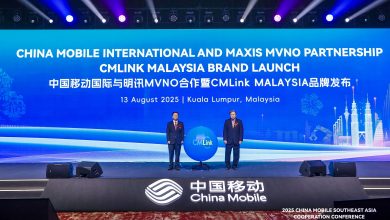Red Hat OpenShift 4.17 Blends Innovation with Stability in Latest Upgrade
New Capabilities Use Generative AI to Help Improve Developer Productivity and Efficiency While Maintaining a Key Focus on Platform Security

Red Hat, Inc., the world’s leading provider of open source solutions, has introduced new capabilities and enhancements for Red Hat OpenShift, the industry’s leading hybrid cloud application platform powered by Kubernetes, as well as the technology preview of Red Hat OpenShift Lightspeed. The new features, delivered with the general availability of Red Hat OpenShift 4.17, are designed to accelerate innovation across the hybrid cloud without compromising on stringent security and compliance requirements.
As AI-enabled and edge applications continue to be a top priority to deliver better user experiences, organizations are integrating new infrastructure and environments in order to meet the needs of these applications. These sprawling, disparate environments can lead to increased complexity as well as greater security and compliance risks.
The latest enhancements to Red Hat OpenShift are designed to cut through complexity, further simplifying application development while building in security features that limit bottlenecks. Additionally, with the technology preview of OpenShift Lightspeed, organizations are able to use integrated generative AI (gen AI) to improve team productivity, regardless of skill level.
Red Hat OpenShift Enables Improved Productivity with Integrated Gen AI
Red Hat OpenShift Lightspeed provides a virtual assistant integrated into Red Hat OpenShift that lets teams ask technical questions in straightforward sentences and receive detailed answers, improving how teams learn and work with OpenShift.
Using an English natural-language interface, users can ask the virtual assistant OpenShift-related questions. It assists with troubleshooting and investigating cluster resources by leveraging Red Hat’s extensive platform knowledge, enabling users to be more productive and efficient while freeing up IT teams to drive greater innovation. The technology preview release of OpenShift Lightspeed now adds support for Red Hat OpenShift AI and Red Hat Enterprise Linux AI as model providers, enabling organizations to use Red Hat as the source of the underlying LLM.
Streamlined Experience Across Virtual Machines and Containers
As organisations add new intelligent workloads to their IT landscape, traditional applications, including virtual machines (VM), often remain a critical part of their infrastructure. Having a unified solution to manage VMs and containers with the same tools and create a consistent experience is essential to streamlining operations.
Red Hat OpenShift 4.17 brings meaningful enhancements to Red Hat OpenShift Virtualisation, improving the management of virtualised workloads. Key features include improved safe memory oversubscription, which increases workload density by allowing more VMs to run than the available physical memory, and improved dynamic workload rebalancing, ensuring resource optimisation and stability during cluster upgrades or changes to workload demand.
Storage live migration is introduced, as a technology preview, allowing non-disruptive movement of data between storage devices and storage classes while a VM is running. The release also introduces, in technology preview, a dedicated virtualisation admin console experience, providing a focused view for managing the OpenShift cluster which is limited to the features, add-ons, and plugins relevant to virtualization, thereby driving greater administrator efficiency.
In addition, Red Hat Advanced Cluster Management for Kubernetes, available separately or as part of Red Hat OpenShift Platform Plus, has new capabilities for managing VMs across multiple clusters. These include improved search and filtering for VMs, as well as, in technology preview, the ability to stop, start, restart, and pause VMs directly from Red Hat Advanced Cluster Management, enabling a single management interface for VM admins to interact with their resources, regardless of which cluster they are hosted on.
Security Without Holding Back Innovation
As developers accelerate workflows and overall application innovation, it can be difficult to keep pace with security and compliance requirements. Red Hat OpenShift 4.17 introduces new security features to help organizations focus on innovation without having to compromise on the platform’s security posture.
New features in technology preview include native network isolation for namespaces to keep sensitive workloads and data discrete, user namespaces in pods to protect against privilege escalations, as well as the Confidential Compute Attestation Operator provides attestation services for confidential container workloads, providing protection of data in use.
Availability
Red Hat OpenShift 4.17 is now generally available. More information, including how to upgrade to the latest version, is available here. Red Hat OpenShift Lightspeed is now available as a technology preview. If you have an existing subscription to Azure OpenAI, OpenAI, or WatsonX.ai, or if you have an OpenShift AI or Red Hat Enterprise Linux AI subscription, you can quickly and easily install OpenShift Lightspeed in your cluster and point it at the model provider of your choosing.




